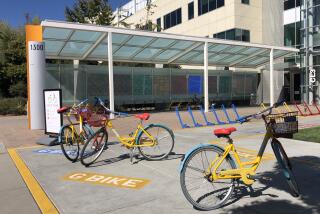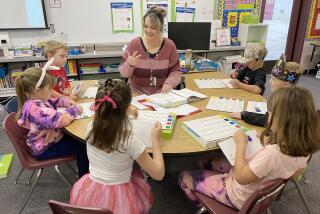Why the U.S. Is Dead-Last in Science
- Share via
The slim, bespectacled man speaking into the microphone before a congregation of 150 people might easily have been in church.
In the sharpest language, he warned of immoral, unethical and almost criminal behavior that if left unchecked, will cause the nation’s children untold hardships as adults.
With every point, murmurs of agreement rippled through the crowd and heads nodded.
The speaker, however, is one of the nation’s leading experts on science education and standardized testing, and the audience was largely made up of elementary school science teachers.
The evil, William Schmidt told the gathering last month, is the woefully inadequate way science is taught in the United States. He described it as so bad that even the nation’s most gifted children are incapable of competing with their peers around the world.
Schmidt is executive director of the U.S. National Research Center Third International Math and Science Study, in East Lansing, Mich. At the recent Cal State Fullerton conference sponsored by Beckman@Science, he said that the problems are systematic:
The U.S. school system is set up to cram as many lessons as possible into students, while schools in top-performing countries teach far fewer topics but with greater depth.
Too many topics are taught in superficial ways in American schools, he said, and too many topics are tested in superficial ways.
For example, U.S. eighth-graders typically cover 65 topics. By contrast, the top-performing schools cover about 10. “Teachers in other countries often spend six weeks on a topic that is covered in two or three days here,” Schmidt said to nods and groans from the audience.
Top-achieving countries rarely use standardized tests such as the SAT to judge academic achievement, he said, but instead require students to write extensively on only a few topics.
“The SATs are awful tests, from a substantive point of view,” Schmidt said.
Although some groups have criticized the tests as culturally biased, the larger problem is that SATs do not measure the academic achievement of any group, Schmidt said.
“It doesn’t tell you what a student knows; it tells you what social class they are. Why not save everyone a lot of trouble and just go ask the parents what social class they are and be done with it?”
Yet, as long as universities require good scores on standardized tests that are essentially meaningless, Schmidt said, textbooks will continue to survey topics rather than treat them in depth, and teachers and schools will continue to teach to the tests.
The results are that an overemphasis on rocks, dinosaurs and seed-growing lessons have left the nation’s children foundering when tested on advanced sciences such as physics, he said.
Even the nation’s top students, those in college preparatory and advanced-placement physics courses, fail when measured against world standards.
“I’m not even going to use the word ‘statistical’: They come in last, bar none,” Schmidt said. “No one is below us.
“This explodes the myth is that it’s the blacks and the Hispanics that are dragging the averages down--that myth is gone. Everything really isn’t OK in white middle-class suburbia where we think we have good schools and good education.”
U.S. teachers are not to blame, Schmidt said, and no one in the audience argued with him.
“Teachers are doing exactly what we’re asking them to do: They’re going to college and coming out and getting credentialed,” he said.
Until university standards for teaching are raised, school districts should use every dollar for professional training, he said.
In the meantime, local efforts, such as Beckman@Science, a $14.4-million initiative funded by the Arnold and Mabel Beckman Foundation to expand science education in Orange County, are helping pick up the slack.
Beckman@Science provides teachers and school districts with science kits containing manuals, student workbooks and props for science experiments. The nine districts participating in the program--Fountain Valley, Huntington Beach City, Irvine Unified, Laguna Beach Unified, Placentia-Yorba Linda Unified, Saddleback Valley Unified, Santa Ana Unified, Tustin Unified and Westminster--receive $200,000 grants that must be matched by local funds.
Though part of the conference focused on the problems plaguing science education, much of the day was spent in hands-on workshops in which teachers tried out experiments they could later take to the classroom.
In one room, five teachers surrounded a moist sheep’s heart, partially covered with fat and oozing formaldehyde. Some shrank away with murmured disgust until they seemed to remembered that dissection was their scientific duty.
Unconsciously mirroring the students they teach, they overcame their squeamishness and poked fingers into ventricles and chambers, noting how “cool” it all was.
More to Read
Sign up for Essential California
The most important California stories and recommendations in your inbox every morning.
You may occasionally receive promotional content from the Los Angeles Times.













